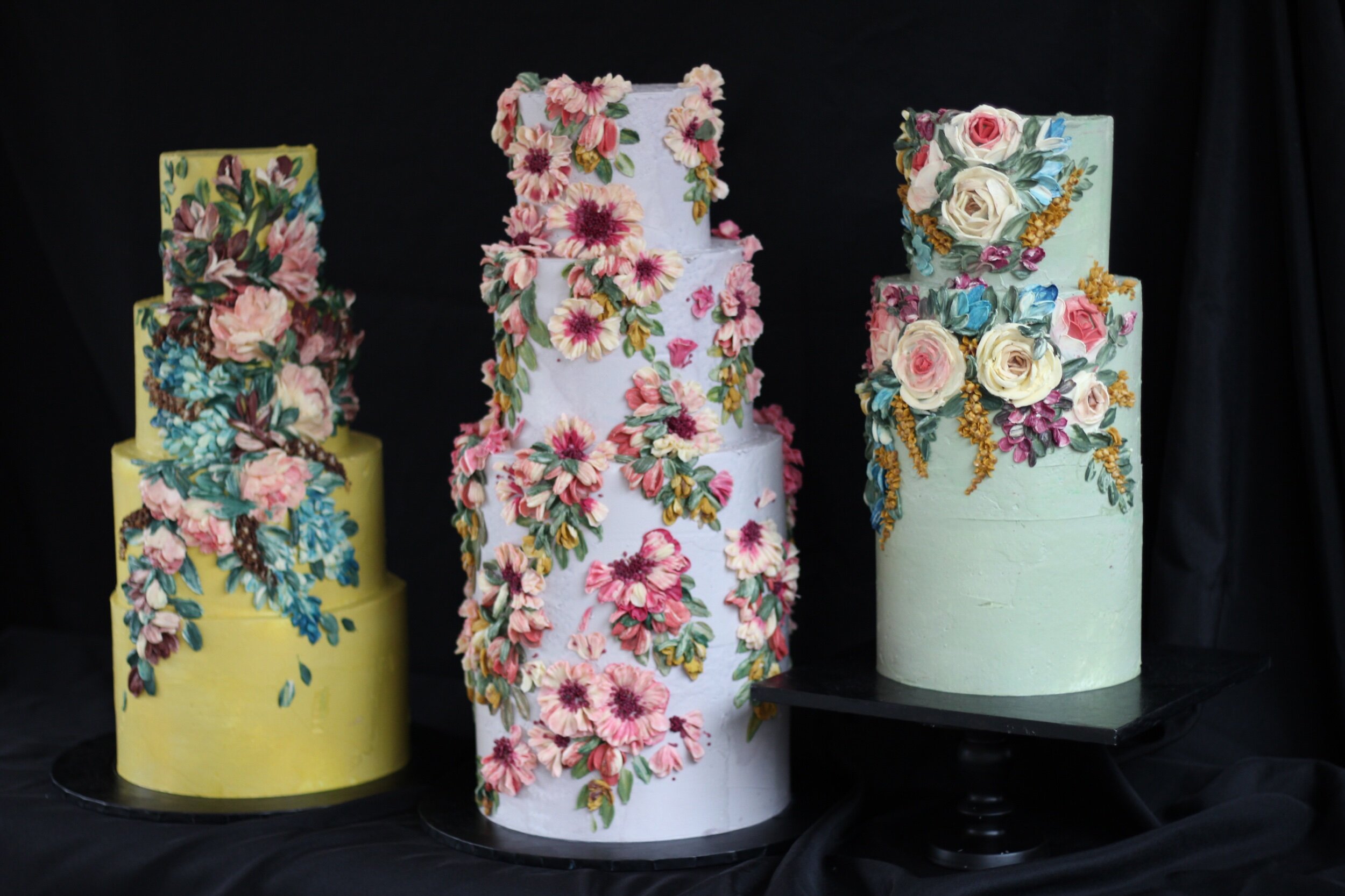Buttercream or fondant?
You’re either a buttercream or a fondant person. We don’t say the F word in our house: I’ve not made a fondant cake for over 10 years. But I know some super talented fondant cake makers and their wedding cakes remain very popular.
So what’s the difference between these two finishes? Basically, fondant, or sugarpaste, is a block or sheet of pliable icing that can be used to cover a cake with a smooth or embossed finish. This is only possible in the right hands, as it can tear and will show lumps and bumps if the cake beneath it isn’t perfectly smooth. Firmer variants of of the same product: modelling paste, flower paste etc, can be used to create figures and delicate flowers, which set hard and can be kept for an almost unlimited length of time.
Graphic wedding cake by Ard Bakery, London
As fondant evolved from the traditional Royal icing finish that used to decorate fruit cakes until they fell out of favour in the 1980s, some people consider it to be old fashioned, but check out the geometric wedding cakes created by the super talented Alison Dunlop at Ard Bakery ( www.ardbakery.com). This level of precision could only be achieved with printed fondant (the spheres are chocolate).
Fondant is also the finish used to create novelty celebration cakes, as it can be moulded into detailed shapes with bold colours. It is good for protecting and preserving sponge cakes, which is why supermarket celebration cakes have such a long shelf life. Many people will say, however, that it tastes pretty plasticky and very sweet. Certainly, when I was cheffing at weddings, we would have to scrape tons of the stuff that had been left on plates by guests into the bin.
So buttercream. Most people know buttercream. It is used to fill and coat fondant cakes beneath the outer layer of icing, as a topping for cupcakes, and was slathered over the delicious birthday cakes we gorged on as children. This is usually American buttercream: a simple mixture of icing sugar, a drop of milk, and butter. American buttercream is very sweet and crusts to remain stable after it has been spread or piped into shape.
Buttercream enjoyed a renaissance around ten years ago as the coating for plain or semi-naked wedding cakes, which could be dressed with fresh flowers. It had a casual but stylish simplicity which suited the rustic barn or urban industrial venues that were becoming a fashionable alternative to country house or hotel weddings.
A semi-naked buttercream cake by Emma Page Buttercream Cakes dressed with fresh roses
Around this time a few of us started to rediscover piping skills that had been used to create the elaborate buttercream cakes of the 1950s in the US. We could pipe roses, dahlias, hydrangeas, wisteria, peonies, even cosmos and hibiscus with different shaped tips. It was SO VERSATILE.
Now, many buttercream cake makers, myself included, are using Swiss or Italian meringue buttercream for cake decoration. It contains a lot less sugar than its American counterpart, and is smooth as the sugar is dissolved into the egg whites. The Italian meringue buttercream I use has a luxurious, glossy, almost translucent finish. It’s perfect for the elaborate painted and sculpted designs that are fashionable right now. A far cry from the rustic cakes of a few years ago.
Customers often describe my buttercream cakes as ‘painterly’, and I guess this is why they seem to have so much character. If you’re choosing a wedding cake, will you opt for the graphic precision and clean lines of a fondant design, or do you prefer the free and painterly effects achieved with buttercream?
Sculpted and piped buttercream wedding cakes by Emma Page Buttercream Cakes, London



